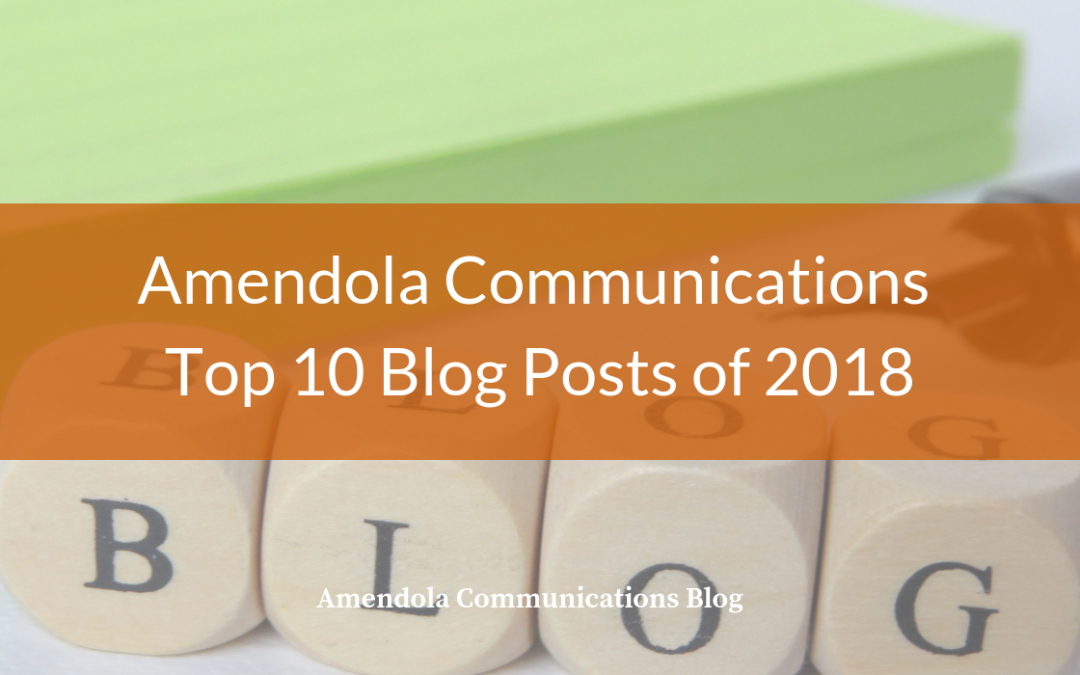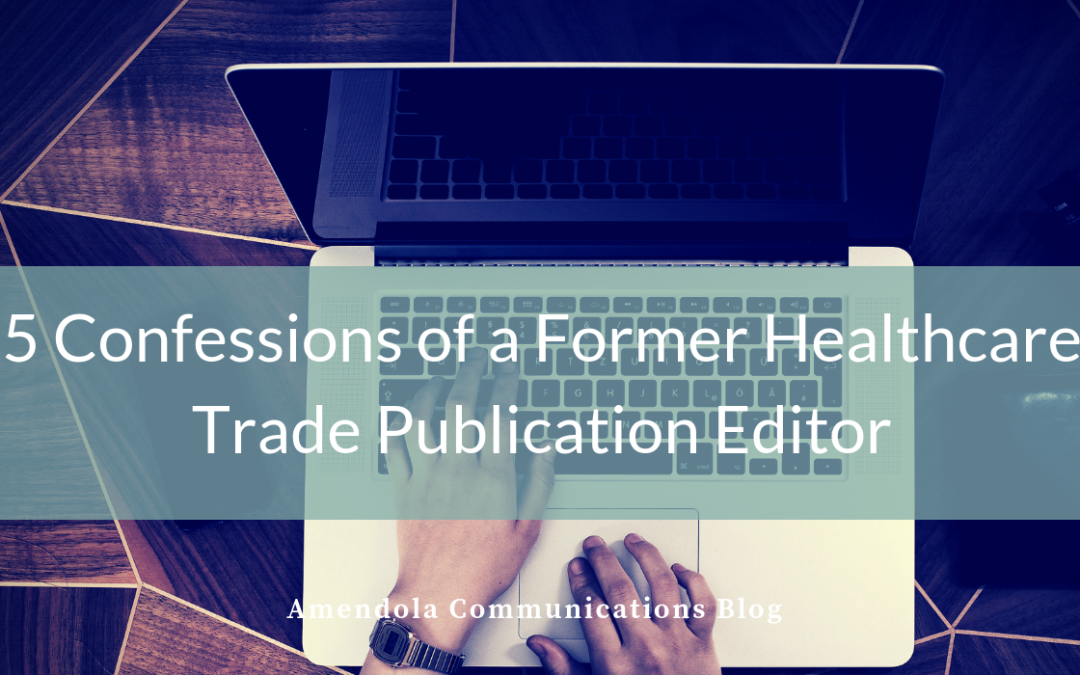
by Morgan Lewis | Feb 13, 2019 | Blog
As a PR writer, I often ghostwrite bylined articles for clients. These articles typically involve interviewing the CEO or another thought leader at the company so I can gather information for a first draft. But they are also helpful for giving me a sense of the executive’s or physician’s voice and learning about their goals for the content.
During these interviews, there is occasionally some confusion about who I am, why I am interviewing the thought leader and what they should say. I am not at all surprised or offended when this happens.
Considering the many meetings and countless calls these thought leaders handle in a typical day from customers, partners, investors and other company leaders, it is no wonder that our interview is not high on their priority list. However, going into an interview prepared can help cover more ground in less time.
If there is one thing I’ve learned over the years, all thought leaders love efficiency. That’s why I’ve created some tips to remember for your next thought leadership interview with your PR team.
- Speak freely. This tip is first because it’s an obstacle that pops up frequently. When thought leaders start an interview, they are occasionally under the impression that I’m a reporter or editor for the publication. To the contrary, I’m an extension of the thought leader’s company, not the publication, so thought leaders can speak their thoughts freely knowing that they will have plenty of opportunities later to review and edit the content as they wish before it is published or posted.
- Know your reader. Some of our clients offer solutions that serve the spectrum of healthcare stakeholders including health systems, physician practices, payers and patients. While some topics are universal, an independent primary care physician is not always concerned with the same challenges as a health system CFO and vice versa. It is always helpful to concentrate on readers’ specific, highest-priority pain points so the content is most relevant.
- Tell me stories. Thought leadership content, by its nature, is high-level. Because of this, sometimes it can lose readers’ interest when they can’t visualize how it applies to their organization. Which is why I’m puzzled when executives ask: “can I tell you a story?” Or apologize: “sorry to bore you with that story.” To the contrary, I love stories and so do readers, even in B2B. Granted, the narratives should be relevant to the topic we’re discussing, but examples and stories are a memorable and effective way to share or explain a thought-leadership concept.
- Bring the facts. Writers are usually pretty good at researching statistics and studies, but, as all healthcare executives know, there is so much data and so little time. I urge everyone I interview to offer their favorite data or studies they feel would be relevant and interesting to readers. It is always better to have too much information and cut it later than have points woefully under-supported.
- Stay on point. Some executives want to discuss nearly every challenge or improvement opportunity in the healthcare industry during our interview. It is often interesting to hear their perspective, but it can occasionally stray from relevance and not always be useful, especially when writing a bylined article with a word-count limit. Shorter, focused articles are also more likely to be read and remembered, according to Forrester.
I realize most senior leaders’ time is very limited, so I’m grateful when they can spare a half-hour of their day to discuss an article or blog post. If they can let their guard down a little and pull some information together beforehand, that time can be well spent, resulting in compelling thought-leadership content that drives awareness, strengthens the brand and generates quality leads.

by Morgan Lewis | Jan 16, 2019 | Blog
Amendola Communications’ blog is designed to share our knowledge of public relations and marketing communications, but also to help other marketing professionals gain an understanding of how PR can and should be integrated into their campaigns. Based on our blog’s most-viewed posts of 2018, it appears readers are interested in a much broader variety of related topics, including trade show best practices, writing style tips and crisis communications.
Several of our most popular blog posts from 2018 were also re-posted on the Daily Dog site from Bulldog Reporter, which indicates that other respected PR pros thought our insights and best practices were helpful enough to share with their readers. Our most-viewed posts, however, were not all written last year. In fact, most of them were posted in 2017 and 2016. Not to get too “meta,” but that result in itself is a content marketing lesson: Valuable, relevant information never gets old.
With that, the following are the top 10 most-viewed blog posts for 2018.
10. Champing at the Bit over the Correct Use of Idioms: Its Just Good PR. For all intents and purposes, this blog post from 2016 explains the correct usage of common English-language idioms (like the one that began this sentence). Apparently, the post “piqued” a lot of readers’ interest and helped them “home in” on their key messages and “flesh out” their content you get the idea.
9. Video Blog: 5 Elements of a Successful Media Relations Program. In this vlog, also from 2016, our Media Relations Director Joy Dinaro explains how to create a successful media relations program in less than two minutes, including tips for knowing the audience and understanding vendor neutrality. Valuable insight in very little time, so it’s no wonder this post was so popular.
8. What Can We Learn From United Airlines Flight 3411. No one in PR or marketing will forget the 2017 crisis communications debacle resulting from a viral phone video of a bloodied passenger being forcibly removed from a United Airlines flight. What’s worse is United’s CEO then publicly blamed the passenger, who did nothing but refuse to give up his paid seat so the airline could give it to its own employees. Clearly, it’s still a topic of interest because this post from 2017 guest authored by James Foster, director of marketing at Amendola Communications’ client Vivify Health) made the top 10 again.
7. The importance of feedback in PR from media, to writing to client relationships. PR and marketing professionals are often so focused on daily tasks and client strategies that we often lack the time to request or contemplate feedback from the media, colleagues, or most importantly, clients. This most-viewed post from March describes different types of feedback in our profession and why it’s so important for improving service and results for our clients.
6. 6 Tips for Making Your Customer Success Stories More Compelling. Case studies are always effective B2B content because, in short, they’re real and they work. That’s why when a case study opportunity presents itself, some marketers don’t lay the groundwork to minimize the time and inconvenience for their customer while maximizing the amount relevant information captured during the research and interviewing. This post, written in 2017, gives readers a step-by-step guide to efficiently and effectively developing the perfect customer success story.
5. PR Pros: Beware of Busywork Masquerading as “Essential Skills”. Amendola Communications is a full-service integrated marketing communications and PR agency, which means our team members wear a lot of hats. However, as this blog post from May points out, PR and marketing professionals need to understand what their most valuable and creative skills are and apply them to serve clients. Other tasks can be delegated to another team member or outsourced. Trying to deliver too many services by yourself often just increases a PR professional’s stress and reduces quality, neither of which will help the bottom line.
4. Time to turn your trade show booth from salesroom to learning lab. We assume that HIMSS18 exhibitors were looking for last-minute booth tips due to the popularity of this post, which was posted just weeks before the health IT mega-conference. Although it may be a little too late for HIMSS19, the post lays out a great conference booth and content strategy that is sure to engage attendees and help your company stand out from others on the floor.
3. Simple Language and Communication Success. Healthcare IT can be complex, but the way we write about it doesn’t have to be. This post, written in 2017, reminds marketing and PR professionals the importance of concise writing and how we should use “fifty-cent words” even when the subject matter lends itself to a lot of “five-dollar words.”
2. Advice for Journalists Considering a Career in Public Relations. Because we tend to do a lot of writing, interviewing, editing, researching, Amendola Communications has a lot of former journalists on staff. Making the switch from reporter or editor to PR professional isn’t always seamless. It’s a different mindset and culture, which this blog post written by a former journalist deftly explains.
1. Going in AP Style. Most consumer and trade publications adhere to the rules of the Associated Press (AP) Style Manual. For a PR professional, using AP style demonstrates that you are a journalism insider, which is crucial when pitching a byline article, press release, or other content that needs to be reviewed and approved by an editor. The AP style guide has quirks that many business writers aren’t familiar with if they don’t have a journalism or PR background. The most-viewed Amendola Communications blog post from 2018 covers many of the most common AP-style errors even the seemingly arbitrary way it abbreviates state names. What could be a very dry topic is actually a fun, lighthearted, engaging read, which is likely another reason why it’s the most viewed post of last year.
That’s our top 10 from 2018. In all, it’s a diverse collection of posts reflecting the broad range of integrated services offered by PR and marketing professionals today, including here at Amendola Communications. We expect to see some of these posts again on next year’s top 10 list, but we will nonetheless continue to supply new enlightening and engaging PR and marketing communications insight to this page every week. Stay tuned.
Have a great 2019!

by Morgan Lewis | Sep 19, 2018 | Blog
Prior to joining Amendola Communications, I was a senior editor at Medical Economics, the largest monthly business management journal for primary care practices. Before that, I was a senior editor at a couple monthly city business publications as well as a daily newspaper reporter.
The journalistic experience has proven invaluable as a public relations writer because it gives me a deeper understanding of how to create the articles that editors want in their publications. As an editor, I would receive pitches daily from PR professionals. I admit that not every pitch received the time and attention that were clearly put into them, for various reasons which I will describe later.
My last day as a publication editor was in May 2011. Judging from my experience since then as an independent and agency PR writer, however, not much has changed, other than the growing importance of social media, which you can read more about from one of our experts here. In that light, here are five confessions from my time as an editor reviewing countless pitches from PR and marketing professionals that might help your company score an interview or article placement.
- If it wasn’t relevant to us, it was deleted. Explain clearly in the pitch how the potential article’s information would be relevant to readers. The editor may not agree, but at least it demonstrates that you took the time to learn about the publication instead of just sending out a mass email with the editor’s name at the top.
- Data/outcomes were always interesting. Quantifiable results jumped out in a pitch, especially when there was a “$” before those numbers. Business management publications, even in healthcare, love to publish articles about dollars earned or saved. Numbers were even more powerful if my publication was offered the first chance to share them with readers, which brings us to another attention grabber.
- Exclusivity was exciting and appreciated. Offering just one publication the first opportunity on a story can be difficult for a company because it limits or delays spreading the story to a wider audience. Exclusivity, however, is alluring to many publication editors, especially web or breaking news publications where being first is mission critical.
- Sharing research builds trust. This tip is somewhat unique to healthcare, but as a trade editor, I always appreciated when a company representative presented medical journal literature that supported the claims in the pitch. Medical journals, unlike marketing content, are objective and critical, which are two qualities journalists prize. Presenting literature in the pitch showed me that the company was trying to be as transparent as possible, which built trust and fostered a stronger relationship with the company representative.
- Offering a real customer was almost a sure thing. Interviewing or publishing an article by a senior executive didn’t intrigue me as an editor as much as speaking with a physician or other customer of the company’s solution. This rule especially held fast if the company was relatively new. Readers want to learn from other readers like them, which is part of the reason today why blogs and YouTube channels from ordinary people are so popular. Sharing the perspective of an actual customer also builds credibility, and again, earns trust with the editor and readers.
There are plenty more tips I could share to grab an editor’s attention, but another quality I appreciated in pitches was conciseness, so I’ll stop there. Fortunately for Amendola Communications, we have lots of former print and web journalists working here, and many others with extensive media-relations expertise. Give us a call or email and we can discuss how we can help spread the word about your company across all types of business and consumer print and digital media.
I promise that we will respond.


